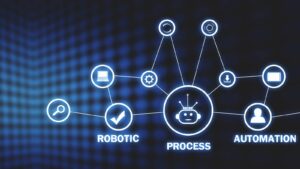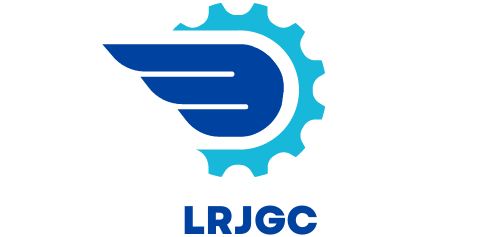Building automation is revolutionizing the way we interact with our environments, making spaces smarter, more efficient, and responsive to our needs. As technology advances, building automation trends are shifting rapidly, offering innovative solutions that enhance comfort, security, and energy efficiency.
From smart sensors that adjust lighting and temperature to advanced security systems that integrate seamlessly with everyday operations, the latest trends are transforming both residential and commercial spaces. These building automation trends advancements not only provide convenience but also contribute to significant cost savings and sustainability efforts, making building automation an essential component of modern infrastructure.
Building Automation Trends
Internet Of Things (IoT) Integration
 IoT devices enable seamless communication between various building systems. Connected sensors and actuators collect real-time data on lighting, HVAC, and security, optimizing their performance. For example, smart thermostats adjust temperature settings based on occupancy patterns, leading to significant energy savings. IoT integration ensures smoother operation and enhanced user convenience by providing remote access and control through mobile devices and centralized platforms.
IoT devices enable seamless communication between various building systems. Connected sensors and actuators collect real-time data on lighting, HVAC, and security, optimizing their performance. For example, smart thermostats adjust temperature settings based on occupancy patterns, leading to significant energy savings. IoT integration ensures smoother operation and enhanced user convenience by providing remote access and control through mobile devices and centralized platforms.
Artificial Intelligence And Machine Learning
AI and machine learning algorithms improve system efficiency by predicting maintenance needs and optimizing energy usage. AI-driven analytics process data from sensors, adjusting systems for optimal performance. For instance, predictive maintenance algorithms identify potential equipment failures, reducing downtime. These technologies also enhance resource management by learning usage patterns, thus refining operational settings dynamically, resulting in cost savings and improved sustainability.
Building Automation Trends: Sustainability And Energy Efficiency
Smart Energy Management
 Smart energy management involves using IoT devices and AI algorithms to monitor, control, and optimize energy usage. Real-time data collection from sensors helps adjust lighting, HVAC, and other systems based on occupancy and external conditions. Data analytics enable predictive maintenance, reducing energy wastage. According to the U.S. Department of Energy, automated systems can lower energy use by up to 30%.
Smart energy management involves using IoT devices and AI algorithms to monitor, control, and optimize energy usage. Real-time data collection from sensors helps adjust lighting, HVAC, and other systems based on occupancy and external conditions. Data analytics enable predictive maintenance, reducing energy wastage. According to the U.S. Department of Energy, automated systems can lower energy use by up to 30%.
Green Building Certifications
Achieving green building certifications like LEED and BREEAM involves integrating automated systems that enhance energy efficiency and sustainability. These certifications assess energy performance, water usage, indoor environmental quality, and material impact. Incorporating features like automated lighting controls, efficient HVAC systems, and energy monitoring platforms helps meet these standards. The U.S. Green Building Council notes that LEED-certified buildings consume 25% less energy. Examples include using motion sensors for lighting and energy-efficient HVAC systems, contributing to higher certification levels.
Impacts On Occupant Comfort And Productivity
Building automation trends play a crucial role in enhancing occupant comfort and productivity by integrating advanced technologies that create adaptable and responsive environments.
Smart Climate Control
Smart climate control systems use IoT sensors and AI algorithms to maintain optimal indoor temperatures. These systems continuously monitor environmental conditions and occupant preferences, adjusting HVAC settings to ensure consistent comfort. For example, sensors detect occupancy and adjust temperature and humidity levels accordingly, promoting a productive atmosphere. Energy-efficient HVAC operation also reduces energy costs, contributing to sustainability.
Personalized Workspace Settings
Personalized workspace settings leverage advanced automation to customize lighting, temperature, and ergonomic configurations based on individual preferences. Occupants use mobile apps or desktop interfaces to adjust their environments, ensuring maximum comfort and productivity. For example, smart lighting systems adapt brightness levels to match personal and task-specific needs. Adjustable furniture settings also enhance ergonomic comfort, reducing strain and improving focus. Research conducted by Harvard Business Review indicates personalized workspaces can boost productivity by up to 25%,
Future Predictions For Building Automation Trends
 Building automation trends future shows increasing integration of AI and IoT for more sophisticated buildings. AI will enable predictive maintenance and dynamic energy management. Smart sensors combined with IoT can create responsive environments, adjusting lighting and HVAC automatically based on occupancy and weather patterns. Blockchain technology might secure data exchange and enhance system interoperability. Buildings will likely become more self-sufficient, utilizing renewable energy sources like solar panels integrated with smart grids. Enhanced cybersecurity measures will protect connected devices from threats.
Building automation trends future shows increasing integration of AI and IoT for more sophisticated buildings. AI will enable predictive maintenance and dynamic energy management. Smart sensors combined with IoT can create responsive environments, adjusting lighting and HVAC automatically based on occupancy and weather patterns. Blockchain technology might secure data exchange and enhance system interoperability. Buildings will likely become more self-sufficient, utilizing renewable energy sources like solar panels integrated with smart grids. Enhanced cybersecurity measures will protect connected devices from threats.
Rapid Evolution
Building automation trends are rapidly evolving, integrating advanced technologies like AI, IoT, and smart sensors to create more efficient and sustainable environments. These innovations not only enhance comfort and security but also offer significant cost savings and energy efficiency. As the industry continues to embrace cutting-edge solutions, the future promises even greater advancements, including predictive maintenance and dynamic resource management.

